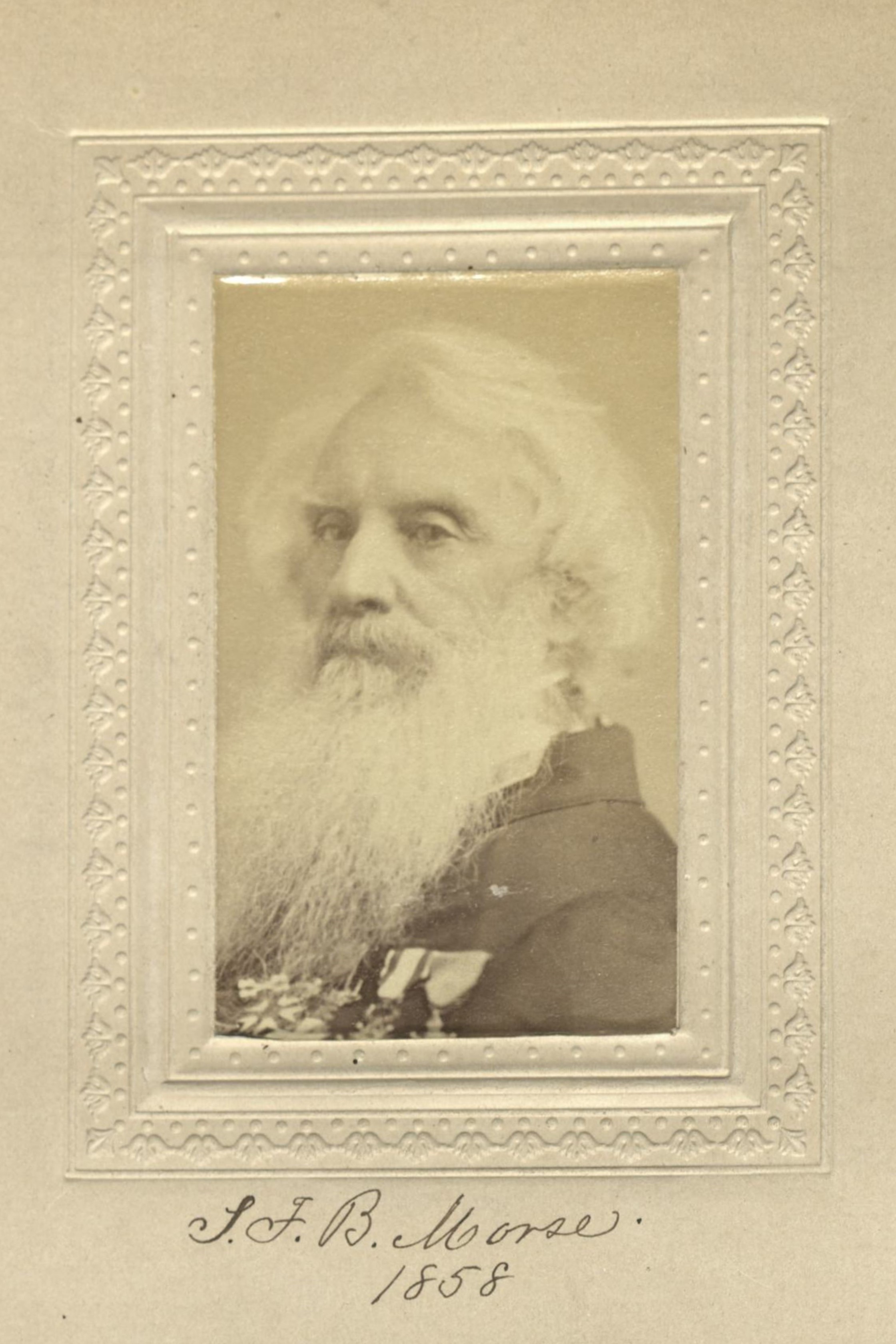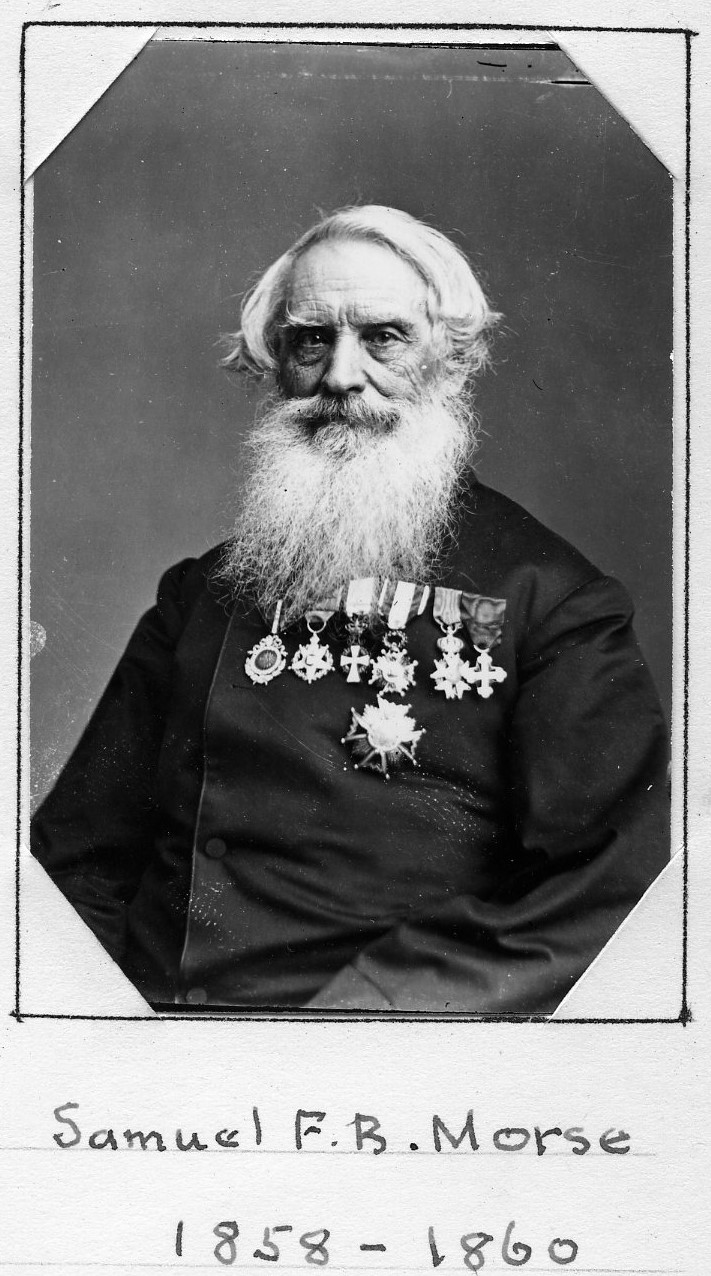Artist/Inventor
Centurion, 1858–1860
Born 27 April 1791 in Charlestown, Massachusetts
Died 2 April 1872 in New York (Manhattan), New York
Buried Green-Wood Cemetery , Brooklyn, New York
, Brooklyn, New York
Proposed by Thomas P. Rossiter
Elected 6 March 1858 at age sixty-six
Century Memorial
Morse was born in Massachusetts and went to Phillips Academy before attending Yale where he studied philosophy, mathematics, and the science of horses. He graduated with Phi Beta Kappa honors in 1810, all the while earning money by painting.
His painting attracted the attention of artist Washington Allston, who invited Morse to accompany him to England, and the two set sail in 1811. In England, Morse worked at perfecting his painting techniques, and by the end of the year he had gained admittance to the Royal Academy. He returned to America in 1815.
In 1816, Morse painted former President John Adams and, in 1825, he was commissioned to paint the Marquis de Lafayette in Washington. In the midst of painting, a messenger delivered a letter from his father that read one line: “Your wife is dead.” Morse left immediately for his home in New Haven but by the time he arrived his wife had already been buried. Heartbroken by the loss, he gave up painting to pursue a means of rapid long-distance communication.
In 1832, Morse met Charles Thomas Jackson who was well schooled in the study of electromagnetism. By witnessing various experiments with Jackson’s electromagnet, Morse developed the concept of a single-wire telegraph. The original Morse telegraph, submitted with his patent application, is at the Smithsonian Institution.
Congress appropriated $30,000 in 1843 for the construction of an experimental telegraph line between Washington and Baltimore. On May 24, 1844, the line was opened as Morse sent the famous words, “What hath God wrought.” In time the Morse code would become the primary language of telegraphy in the world and Morse would fiercely defend his title as the “inventor of the telegraph.”
Morse died in 1872 at his home on West 22nd Street in New York.
James Charlton
“Centurions on Stamps,” Part I (Exhibition, 2010)


